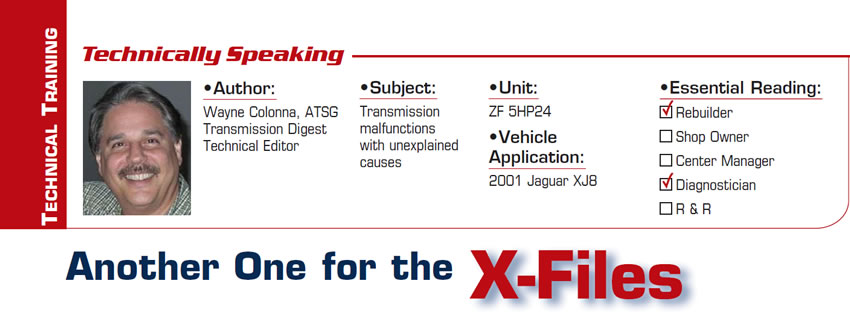What Is a Good Shrink Worth these Days?
Psychiatrists and psychologists charge an awful lot of money for an hour’s worth of their time. Unlike us, they really don’t fix anything quickly. They mostly turn it around on the patient and ask, “How do you feel about that and what do you think you should do about it?”
Can you imagine trying to ask your customers either of those questions? It would be the last time you ever saw them. They want us to diagnose and fix it right the first time, as fast and for as little as possible.

Tips for Aligning Torque-Converter-Clutch Linings into Covers
Torque-converter manufacturers have their own arguable reasons for the location of the clutch lining. For many years, torque-converter lockup-clutch linings were bonded onto the converter-clutch and/or converter-damper assemblies. In recent years we have seen the clutch linings bonded into the front covers. Rebuilders are now faced with the choice of bonding the replacement friction material to the cover like the OE or to the piston as in the earlier-model converters.
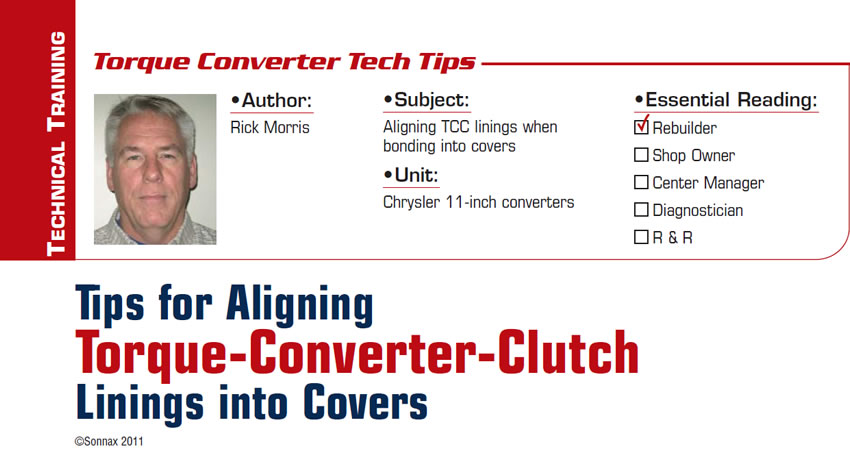
All Plugged Up
In this particular situation, Dave had been working on a 2001 BMW 740i with a 5HP24 transmission. The vehicle originally came in with a complaint of leaking from the front. The unit was very low on fluid, was slipping and the fluid was burnt. The shop recommended that the transmission be overhauled because of the conditions mentioned and the mileage on the unit. Everything went normally with the rebuild, and the customer left with a properly working unit.

Even ‘Weird’ Troubleshooting Can Hold Lessons
“Wiring problems,” “shorts” and drains are words that act like a double-edged sword for me. They seem to be the place where otherwise competent technicians tend to draw the line when it comes to problems they enjoy working on. I understand why a lot of techs feel that way after seeing some of the weird problems I’ve encountered.

Diagnosing the Elusive No Reverse with the 4L80-E
Diagnosing a shift concern can be easy, as long as you understand some basic techniques to help get to the root of the problem. A reliable and orderly diagnostic approach is splitting the circuits. Splitting the circuits means separating and analyzing the hydraulic, electrical and mechanical issues that could create the problem. Let’s follow through the flow of diagnosis in this one together. Make sure you have the following on hand: a line-pressure-test spec sheet with test-port locations, and a clutch and band chart to help eliminate other areas that may be associated with the problem shift.
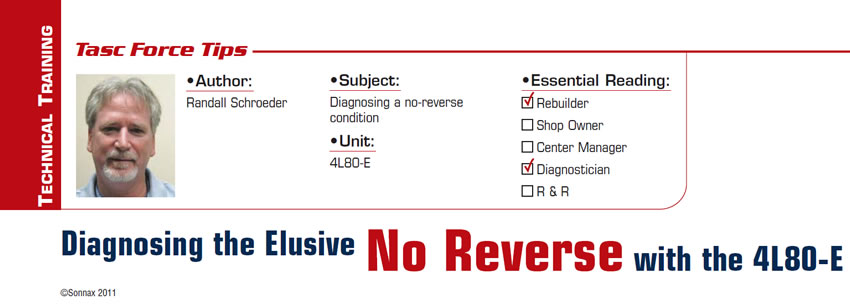
Resetting Hyundai Shift Adapts, and Procedures for Relearning
Body of Evidence Like most late-model vehicles, Hyundai vehicles need the shift adapts cleared and then relearned to get a properly working transmission after overhaul or valve-body replacement. Some Hyundai vehicles can have the shift adapts cleared by disconnecting the battery, connecting the positive and negative battery cables and turning on the headlights for 10

Revisiting the New Venture 246 Transfer Case
The New Venture 246 transfer case has been in production since 1998. New Venture, however, is no longer with us, having been acquired by Magna International, a large conglomerate that is a tier 1 supplier to many of the global auto manufacturers. I wrote a previous in-depth article about the NV246, which you can download from our website (www.rsgear.com) for free, explaining the workings of this active-transfer-case theory of operation and electronic controls. Go to Technical, and find NV 246, Understanding the Tricks, under the transfer-case section. This article describes the design changes and the fixes for common problems and design defects for this unit.
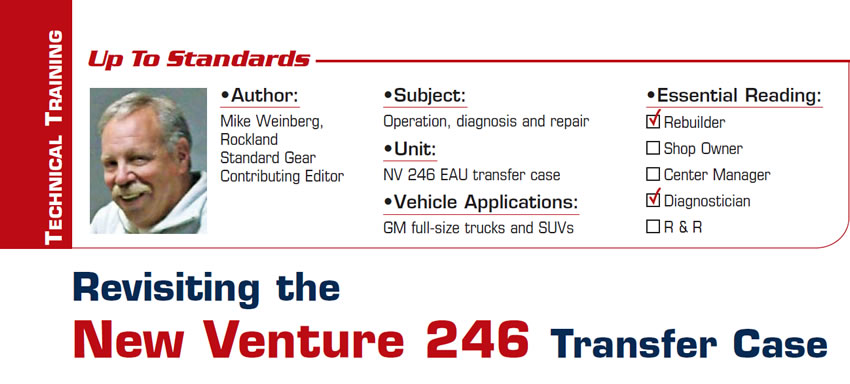
Using Parameter Identification Data to Diagnose
I recently fixed an intermittent problem on an FNR5 transmission in a 2006 Mazda 3. The shop that brought it to me had been trying unsuccessfully for the past six weeks to fix it. When I called to inform them that it was fixed, they asked how I was able to fix in such a short time what they had not being able to do in weeks.
That question is what prompted me to write this article, not because I believe I’m in any way more intelligent than the average transmission diagnostician but because of the approach I used that allowed me to find the intermittent problem.
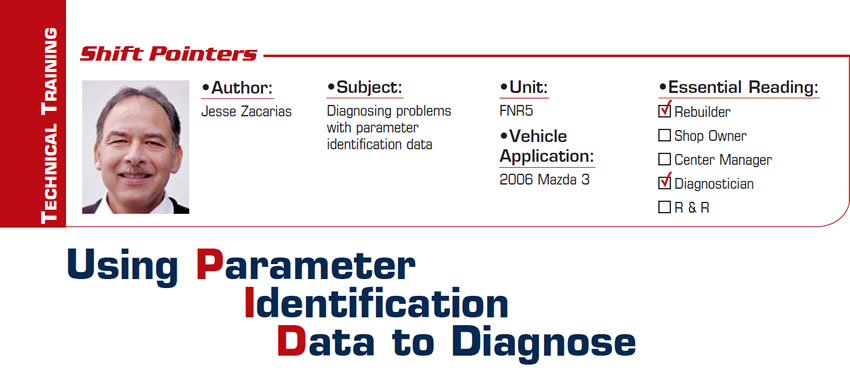
January 2012 Issue
In This Issue
GM 4L80-E: P0894 TCC slip
Nissan RE5R05A: TCC shudder and/or intermittent solenoid/pressure-switch circuit faults
Ford 4R70W/4R75E: Direct-clutch failure
Ford/Mazda CD4E, 2001 & up: Persistent gear-ratio errors
Isuzu NPR A465 (AS68RC): Shift-adapt manual relearn procedure
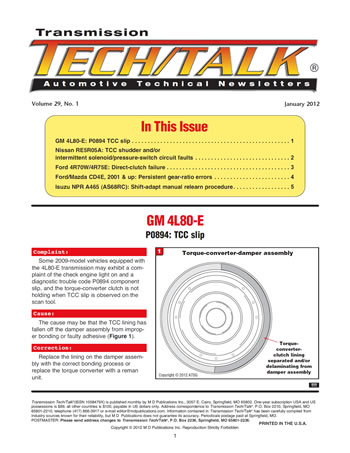
Another One for the X-Files
Back in 2003, when Transmission Digest hosted Showpower in Charlotte, N.C., I did a presentation called “Odds with an End,” an array of transmission malfunctions featuring oddities from the “X” files.
To this day I still receive calls from some who attended this seminar saying, “Hey, Wayne, I’ve got another one you can add to your X-file list!”
The idea of labeling transmission malfunctions as fitting into an X-file category is the result of knowing what fixed the problem but having difficulty explaining why.
